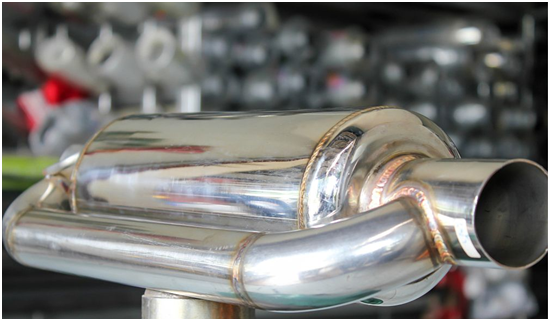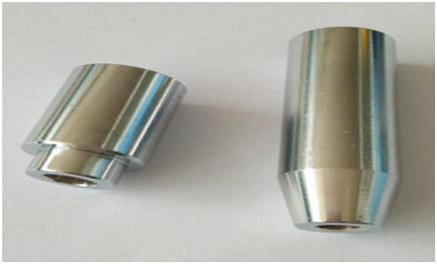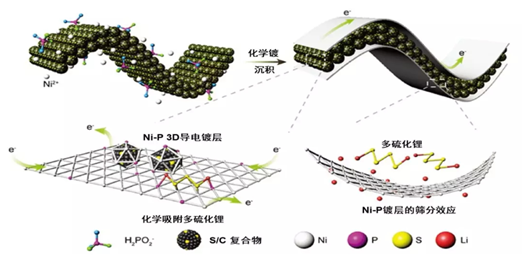Nickel plating
1. What is nickel plating
Nickel plating is a technique of electroplating a thin layer of metal objects on nickel. The nickel layer may be decorative, corrosion-resistant, and wear-resistant, or used for the purpose of accumulating worn or insufficient parts for rescue. It is becoming more and more popular for various manufacturing applications. Nickel plating is a process that uses a current to cover a thin layer of nickel on a conductive material that is usually made of metal. Other metals used for electroplating include stainless steel, copper, zinc and platinum.
Decorative bright nickel is used in a wide range of applications. It provides high gloss, corrosion protection, and wear resistance. Bright nickel can be found in the automotive industry in bumpers, rims, exhaust pipes and decorations. It can also be used for bright work on bicycles and motorcycles. Other applications include hand tools such as lighting and plumbing equipment, wire racks, firearms, and home appliances and household items.

2、Second, the characteristics, performance and uses of nickel electroplating
-- Enhanced corrosion resistance
-- Increased hardness
-- Excellent strength
-- Wear resistance
-- Increased ductility
1. The stability of the electroplated nickel layer in the air is very high. Due to the strong passivation ability of nickel metal, a very thin passivation film can be quickly formed on the surface to resist the corrosion of the atmosphere, alkali and certain acids .
2. Nickel electroplating crystals are extremely fine and have excellent polishing performance. The polished nickel coating can give a mirror-like gloss appearance, while maintaining its gloss in the atmosphere for a long time. Therefore, the plating layer is often used for decoration.
3. The hardness of the nickel plating layer is relatively high, which can improve the wear resistance of the surface of the product. The nickel plating layer is commonly used in the printing industry to increase the hardness of the lead surface.
Due to the high chemical stability of nickel metal, some chemical equipment also uses a thick nickel coating to prevent corrosion by the medium. Nickel plating is also widely used in functional aspects, such as repairing worn and corroded parts, and using brush plating technology for local plating. The electroforming process is used to manufacture electroforming plates, record molds and other molds in the printing industry. The thick nickel plating layer has good wear resistance and can be used as a wear-resistant plating layer. Especially in recent years, composite electroplating has been developed, which can deposit composite nickel plating with wear-resistant particles, which has higher hardness and wear resistance than nickel plating. If graphite or fluorinated graphite is used as dispersed particles, the obtained nickel-graphite or nickel-fluorinated graphite composite coating has good self-lubricating properties and can be used as a lubricating coating. Black nickel plating is also widely used as a plating or decorative plating for optical instruments.
4. Nickel plating has a wide range of applications and can be used as a protective decorative coating. On the surface of steel, zinc die castings, aluminum alloys and copper alloys, it protects the base material from corrosion or bright decoration; it is also often used as other coatings. The middle plating layer is coated with a thin layer of chromium or a layer of imitation gold, which has better corrosion resistance and more beautiful appearance. In terms of functional applications, nickel plating on parts in special industries is about 1 ~ 3mm thick, which can achieve the purpose of repair. Especially in the continuous casting mold, the mold of the surface of the electronic component, the die-casting mold of the alloy, the complex shape of the aerospace engine parts and the manufacture of micro electronic components, etc. are more and more widely used.
5. In electroplating, nickel electroplating has many excellent properties, its processing volume is second only to electroplating zinc, and its consumption accounts for about 10% of the total nickel output.

3. How does the electroless nickel coating work
In order to correctly transfer nickel to the product surface, a negative charge must be applied to the base material. To this end, the product is usually connected to the rectifier, battery or other power supply through a wire. After connection, the nickel rod is connected to the positive pole of the rectifier or power supply in a similar manner.
After the initial steps are completed, the substrate is immersed in a solution of salts with chemical composition, including electroplated metal. By electroplating nickel, the solution consists of water and nickel chloride salts. Due to the current in the solution, the nickel chloride salt will decompose into negative chloride ions and positive nickel cations. Then, the negative charge of the base metal attracts positive nickel ions, and the positive charge of the nickel rod attracts negative chloride ions. Through this chemical reaction, the nickel in the rod oxidizes and dissolves into the solution. From here, the oxidized nickel is attracted to the base material and then covers the product.

4. Pretreatment process of nickel plating
The correct pre-treatment and post-treatment of basic products are directly related to the quality and deposition rate of nickel plating. To help ensure uniform and high quality adhesion, chemical or manual preparation includes the following three steps:
Pre-treatment surface cleaning: Surface cleaning requires the use of solvents, abrasive materials, alkaline cleaners, acid etchants, water, or a combination of them to eliminate contaminants.
Surface modification: The exterior of the modified base product can be improved by adhesion or metal hardening.
Surface cleaning after treatment: Perform finishing operations such as rinsing to end the electroplating process.
Summary: The difference in principle between electroless plating and electroplating is that electroplating requires an external current and anode, while electroless plating relies on the autocatalytic reaction that occurs on the metal surface.
The electroless nickel plating layer is extremely uniform. As long as the plating solution can be immersed and the solute exchange is sufficient, the plating layer will be very uniform, which can almost achieve the effect of profiling.
Electroplating cannot perform full-surface plating on some complex-shaped workpieces, but electroless plating is used to plate workpieces of any shape.
The electroless nickel plating layer is amorphous, without any crystal gaps on the surface of the plating layer, and the electroplated layer is a typical crystalline plating layer.
Electroplating has an applied current, so the plating speed is much faster than electroless plating. Electroplating of the same thickness is completed before electroless plating.
The bonding force of electroless plating is generally higher than that of electroplating.
Electroless plating is mostly environmentally friendly than electroplating because it uses food-grade additives and does not use harmful substances such as cyanide.


